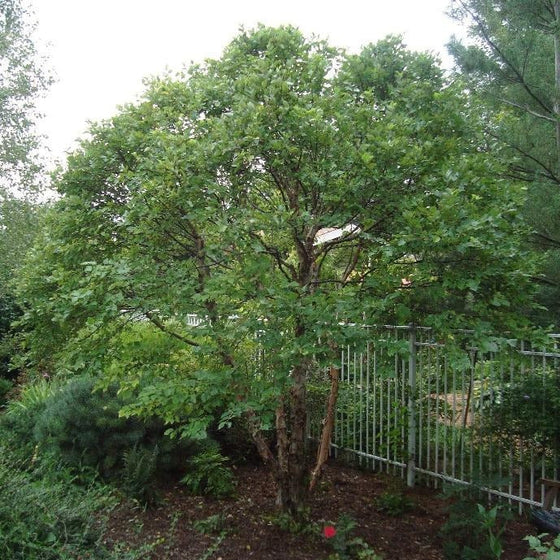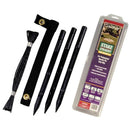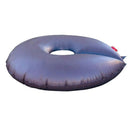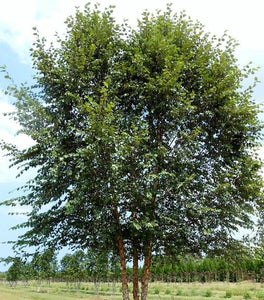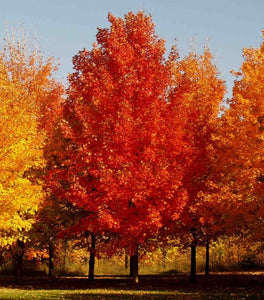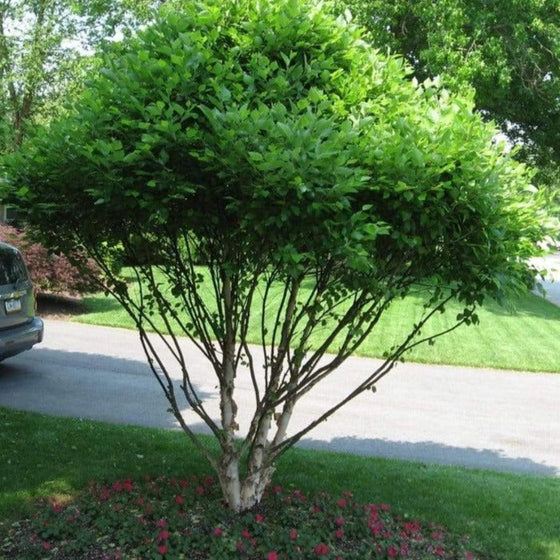
Images Depict Mature Plants
Dwarf River Birch Little King Trees for Sale Online
The Dwarf River Birch Little King or Fox Valley River Birch (Betula nigra) is a beautiful, multi-branched tree that provides unusual winter interest. Little King River Birch is ideal for smaller gardens, reaching 8-12 feet in 10 years time. The versatile Dwarf River Birch provides the wow factor of the River Birch's exfoliating bark and graceful branching while remaining in a compact, manageable size.
The Dwarf River Birch is perhaps one of the most culturally adaptable of all the birches. Little King can handle wet conditions, and will also tolerate drier soils once established. Consider planting this stunning dwarf variety as a specimen or in small groupings for home residences, public parks and commercial properties. Although the Little King Dwarf Birch is heat tolerant, it will benefit from a cool and consistently moist root system. Lastly, this dwarf variety has excellent pest and disease resistance, adding to its long list of positive attributes.
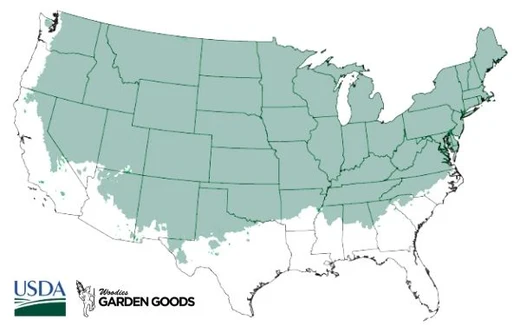
| Hardiness Zone: | 3-7 |
|---|---|
| Mature Height: | 8 to 10 feet |
| Mature width: | 10 to 12 feet |
| Classification: | Broad Leaved deciduous tree, |
| Sunlight: | Full Sun to part shade |
| Habit: | Upright, Rounded |
| Foliage: | Glossy Green, Butter Yellow fall color. |
| Pruning Season: | No pruning needed. |
| Soil Condition: | Any well drained soil |
| Water Require: | Water well until established. |
| Uses: | Tolerates moist soil and full sun. Will adapt to drier sites once established. |
How to Care for Dwarf River Birch Little King
Follow these guidelines for the best results
STEP 1: PLANTING
When planting your newly purchased Dwarf River Birch tree, we recommend that you dig a hole twice as wide as the root system but not deeper. Take care not to bury your tree trunk. Be sure that the root collar is slightly above ground level. If your tree is too low in the planting hole, compact some soil under the root ball to bring the root collar up. The most common cause of tree decline after transplanting is planting too deep. Depending on the quality of your existing soil you may need to add a locally sourced compost or topsoil to the back-fill soil. We do not recommend using straight topsoil or compost as a back-fill soil because more times than not these products will retain entirely too much moisture and will cause the root system to rot. Adding compost or topsoil will help the young feeder roots of Dwarf River Birch to spread through the loose, nutrient rich soil, much easier than if you used solely the existing soil which more times than not will be hard and compacted. Espoma Bio-Tone Starter Plus fertilizer is a great starter fertilizer that helps produce large root systems very quickly. We love this product and use it on all plants, shrubs and trees we install in our own gardens.
STEP 2: WATER
After back-filling and lightly compacting the 50/50 mix of existing soil and compost, give the Dwarf River Birch Tree a good deep watering. This is not to be rushed. Most of the water you put on the plant at first will run away from the plant until the soil is soaked. A general rule of thumb is to count to 5 for every one gallon of pot size. For example a one gallon pot would be watered until you count to 5 a three gallon pot would be 15 and so on. Check the plant daily for the first week or so and then every other day there after. Water using the counting method for the first few weeks. Soaker Hoses can also be used to water when planting a long row of trees.
STEP 3: MULCH
We highly recommend that you mulch your Little King Dwarf River Birch with either a ground hardwood mulch or a ground cypress mulch depending on your local availability. Any type of mulch will do but cypress or hardwood mulch will be of a higher quality and provide better nutrition overall as they breakdown. Mulching helps to keep weeds away which will compete with your new investment for water and nutrients. A 2 to 3 inch layer of mulch is sufficient but remember to take care not to cover any part of the stem of the plant with mulch. Its better to leave a one inch gap of space between the mulch and the stem or trunk of the plant.
STEP 4: FERTILIZE
Once established, your Little King Dwarf River Birch should need less fertilization. A light spring application every year or every two years is perfectly acceptable. If your tree is exhibiting stress symptoms, your first step can be a soil test to check the nutrients in your soil composition. If your tree problems are unrelated to a lack of nutrients, fertilization is not the answer. Unless a soil test indicates otherwise, use a fertilizer containing 10 to 16 percent nitrogen. The fertilizer should be applied on all soil covering the root system, which is typically shallow, extending beneath the entire canopy. Carefully read and follow package instructions. Don’t fertilize your Dwarf River Birch after mid-August. Fall is the time for plants to begin preparing for dormancy. Fertilizing at this time may stimulate new growth that will be too tender to withstand the winter. In the South, a late May application and another in July would be about right. More northern areas may wish to fertilize only once in June or July.

